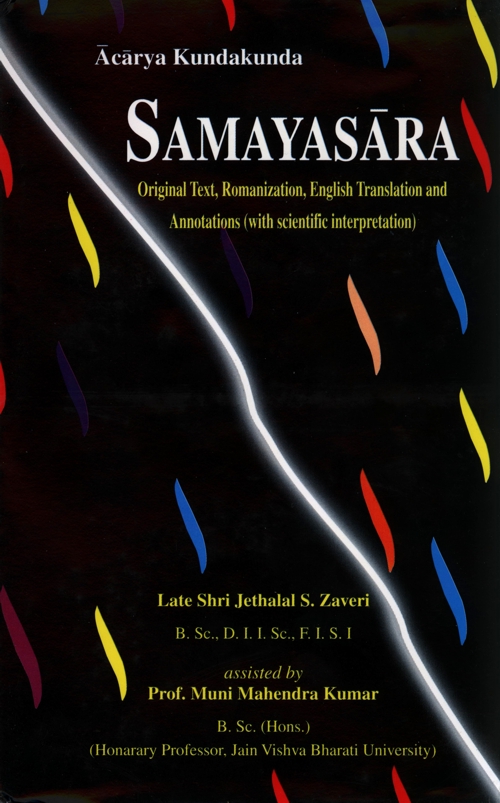
āyārādῑ ṇāṇaṃ jῑvādῑ daṃsaṇaṃ ca viṇṇeya.
chajjῑvaṇikaṃ ca tahā bhaṇadi carittaṃ tu vavahāro..40

ādā hu majjha ṇāṇaṃ ādā me daṃsaṇaṃ carittaṃ ca.
ādā paccakkhāṇaṃ ādā me saṃvaro jogo..41
(Āyārādῑ ṇāṇaṃ) [Scriptures such as] Acārāṅga etc. constitute right knowledge, (jῑvādi daṃsana ca) faith in tattvas such as jῑva etc. is right world-view (ca chajjῑva-ṇikaṃ carittaṃ) and [nonviolence towards] six types of jῑvas is right conduct; (taha tu vavahāro bhaṇadi) such is the teaching of vavyahāra aspect.
(Hu majjha ādā) Transcendentally, self alone is (ṇāṇaṃ) right knowledge, (me ādā daṃsaṇaṃ carittaṃ ca) right world-view and right conduct; (ādā paccakkhāṇaṃ) self again is vow and (me ādā saṃovaro jogo) self is saṃvaro and self is yoga.
Annotations:
In these two verses, the author distinguishes between the two aspects of threefold path of self-realization. According to the empirical aspect—vyavahāra naya, three elements—knowledge (jñāna), belief (darśana), and conduct (cāritra) are indispensable and all the three must be of right sort. Thus, right knowledge (samyagjñāna) is the correct understanding of the nature of self, without doubt or error. It is available in and obtained from the scriptures. We have stated earlier that Jains regard twelve aṅgas [original scripture] (which comprise the whole of the scriptures) to contain all truths, the first of these is Ācārāṅga. Unshakable faith/ belief in the true nature of reality—self and non-self—is right world-view (samyagdarśana). Self and non-self—jῑva and ajῑva—are the mūlatattvas or the primary categories of truth while the others are derived by their combination and separation. Right conduct is conditioned by right belief and right knowledge. Austerities, discipline and self-restraint constitute the right conduct. The whole Jain code of moral and spiritual virtues is inspired by the one great principle of non-violence (ahiṃsā). Right conduct should be uninfluenced by desire or aversion. These three elements constituting the path are the three jewels. According to the transcendental aspect—ultimate point of view, all the three elements have reference to self and self alone. First, it implies the belief in the ultimate nature of pure self i.e., the belief that emancipated soul (paramātmā) is nothing but pure and perfect self. Secondly, full knowledge of self and its direct experience lead to the knowledge of all other tattvas centering round the self. And lastly self-realisation itself is cāritra par excellence. Thus, Self is knowledge. Self is faith, and Self is conduct; Self is abstinence and Self is the stoppage of karmic flow (saṃvara).
 Jethalal S. Zaveri
Jethalal S. Zaveri
 Prof. Muni Mahendra Kumar
Prof. Muni Mahendra Kumar

